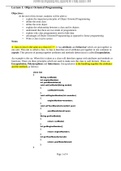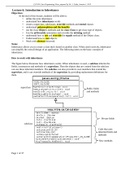Java Programming and Networking (CSI26M1)
Walter Sisulu University (WSU)
All 7 results
Sort by
A class is therefore set of attributes put together in one container or capsule. This process of putting together attributes and methods (behavior) is called Encapsulation.
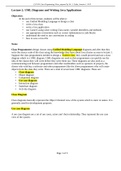
-
UML Diagrams and Writing Java Applications
- Class notes • 5 pages • 2021
-
- R50,00
- + learn more
UML diagrams are used so that programmers can quickly see the the idea of the classes they will write before they write them out. These diagrams are also used as a the communicating tool between programmers and other stakeholders such as sponsors of projects, the clients who wish to buy software and other programmers like the client programmers who will create objects from the class they write
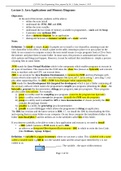
-
Java Applications and Memory Diagrams
- Class notes • 16 pages • 2021
-
- R50,00
- + learn more
To install is simply to put. Examples are to install a vice-chancellor, meaning to put the vice-chancellor in his office, to install a plate on the table, meaning to place or to put a plate on the table. In our scenario in computer science, the term install means to copy programs from a CD or from the internet and place them in some folder. In most cases, this process is automated and one has to click options and things just happen. However, it must be realized that installation is simply a proc...
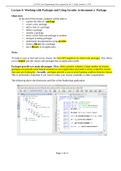
-
Working with Packages and Using Javadoc to document a Package
- Class notes • 11 pages • 2021
-
- R51,00
- + learn more
Packages provide two main advantages. First, when a project contains a large number of classes, packages can provide some logical structure to your application and make it easier to find the classes that your are looking for. Secondly, packages provide a way to avoid naming conflicts between classes. This is particularly important if you want to make your classes avaibable to other programmers.
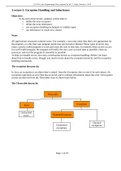
-
Exception Handling and Inheritance
- Class notes • 25 pages • 2021
-
- R50,00
- + learn more
All applications encounter runtime errors. For example, a user may enter data that are not appropriate for the program, or a file that your program needs may get moved or deleted. These types of errors may cause a poorly coded program to crash and cause the user to lose data. In contrast, when an error occurs in a well-coded program, the program will notify the user, save as much data as possible, clean up resources, and exit the program as smoothly as possible. To help you handle errors, Java...
Inheritance lets you create a new class based on an existing class. Then, the new class inherits the fields, constructors and methods of the exisiting class.
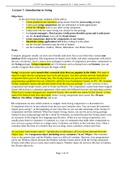
-
Introduction to Swing
- Class notes • 72 pages • 2021
-
- R50,00
- + learn more
Swing components were named after a musical style that was popular in the 1940s. The name is meant to imply that the components have style and pizzazz. You have already used the JoptionPane component that is part of the String class. The Swing classes are part of a more general set of UI programming capabilities that are collectively called the Java Foundation Classes, or JFC. JFC includes Swing component classes and selected classes from the ge

Did you know that on average a seller on Stuvia earns R4500 per month selling summaries? Hmm, hint, hint. Discover all about earning on Stuvia

